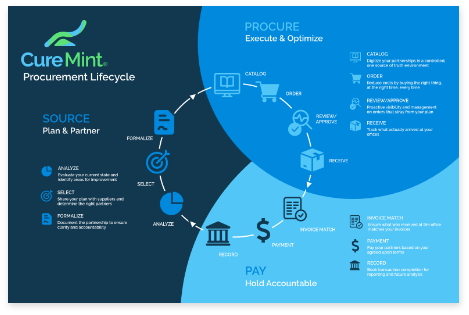Achieving the best deals on your most essential supplies has always been critical to running any dental practice. And, especially now, cutting supply costs has never been more vital to your organization. With distributors competing like lions for market share, you need to figure out how you can secure the products your dental organization requires in the most cost-effective fashion.
Yet there’s never a better opportunity to angle for better deals.
In the first part of this series, we took you through organizing a starter formulary and analyzing how you spend money on your dental organization. In this post, we’ll use your findings to get the best prices on your supplies. This is where you’ll determine your baseline for negotiation. You’ve assembled and reviewed your current spending, so now, you’ll supplement that with price-point comparisons from other vendors and suppliers.
Download the entire 9 Step Guide to Driving Down Dental Supply Expense here.
STEP TWO: REQUEST FOR QUOTATION (RFQ)
They say knowledge is power. As we stated in the previous installment, your starter formulary is the foundation of driving down your yearly costs. And now, with all of your spending information collected in one spot, you’ll strengthen your case moving into negotiations.
Your first move here is rather direct: Send out your starter formulary with pricing requests, or a Request for Quotation — an RFQ. This RFQ will make it clear to distributors that you desire a fresh price comparison on all the products you’ve been ordering over the past year.
Without an RFQ, your distributors will work on the assumption that they can simply sub in cheaper products than what you’ve been ordering. However, that’s not your aim at this juncture. Whenever feasible, you want the same high-quality products your staff is used to, just at a better price. After all, why skimp on quality?
In a way, negotiations begin during the RFQ stage. When drafting your RFQ, we recommend you supplement your request with a few deceptively simple questions, such as:
- Where are your distribution centers and/or corporate support sites located?
- What are your standard shipping transit times or rates?
- Which dental service organizations (DSOs) have you recently added to your clientele?
- Have you lost any DSO accounts in the last 12 months?
- Can you provide any references from other DSOs?
- Do you offer any training?
Along with gathering this intel, take this time to seek other possible variables to sweeten your pot. If you play your cards right in negotiations, you can finagle such extras as a signing bonus, early-pay discounts or rebates, continuing-ed allowances, corporate meeting sponsorships, marketing material, or volume discounts.
To that final point, here’s a tip for larger dental organizations that’ll blow your mind: You may be able to arrange a Cost-Plus Transparent Pricing Model. Whether they admit it or not, distributors manipulate price margins based on volume, demand, or their profitability budgets. A cost-plus contract requires that the distributor standardize the percentage of their markup to all inventory, transparently against the manufacturer’s production cost. Medical organizations have already taken advantage of this pricing model, but the dental industry has yet to catch on. If you buy supplies at high volume, you should ask about establishing a cost-plus contract.
Again, knowledge is power — use all these pieces of information as bargaining chips in negotiations.
Send your RFQs to all the major distributors in the dental industry and smaller local suppliers you might like to work with in the future. That may seem daunting, but the more knowledgeable you are about your pricing options, the better deal you’ll be able to negotiate.
The power of the RFQ comes from your commitment to the consolidation of suppliers. You may find that, in analyzing your ordering history, you are buying the same products from different distributors. Your RFQ will clearly state the total volume of spend to that product category the distributor can expect if you were to direct 100% of your spending to them.
Once you have all your RFQs returned, it’s time to enter that data from each distributor alongside your starter formulary, as shown below:
 Now that you’ve created a single source of data, you can easily compare your previous 12 months’ total spend to the new price points each distributor quoted you following your RFQ. While prices for certain products may be higher or lower depending on the vendor, in this example, we can see that Distributor 2 can deliver total savings of over $6,000 on the exact same products you are currently purchasing from Distributor 1. With all that in mind, you can enter negotiations with suppliers to get the best deal possible, whether you opt for a new vendor or stick with your old reliable at a better rate.
Now that you’ve created a single source of data, you can easily compare your previous 12 months’ total spend to the new price points each distributor quoted you following your RFQ. While prices for certain products may be higher or lower depending on the vendor, in this example, we can see that Distributor 2 can deliver total savings of over $6,000 on the exact same products you are currently purchasing from Distributor 1. With all that in mind, you can enter negotiations with suppliers to get the best deal possible, whether you opt for a new vendor or stick with your old reliable at a better rate.
TIP: Unit of Measures(UOM) – Not paying attention to UOM will likely result in overestimated savings, or potentially even an increase in spending.
For example, offices will likely order house brand products from distributors. The distributors bidding the business that doesn’t currently work with the DSO can’t provide pricing for other distributor’s house brand gloves. Instead, they will provide pricing for their house brand gloves. However, their UOM may differ from that of their current purchases. So, pay attention to the price per each, instead of the price per product.
RFQs represent a bit of heavy lifting, but you can already see how this process quickly points out where savings can be made in your dental organization.
In the next steps, we’ll take all the information we’ve gleaned from the RFQs and apply them to negotiate the best possible deals for the products your offices love.
Keep a lookout for part three: How to Negotiate Like A Boss
Related Blogs
How to Get Started with Dental Spend Management When You Don’t Know Where to Start
09.30.21
For rapidly growing dental service organizations (DSOs), the…
Using Big Data to Lower Dental Supply Costs
09.28.21
As the dental market surpasses $150 billion and private…
Not All Dental Costs Are Equal: Which One Are You Focusing On?
09.27.21
It doesn’t matter whether you’re whitening teeth or selling…





